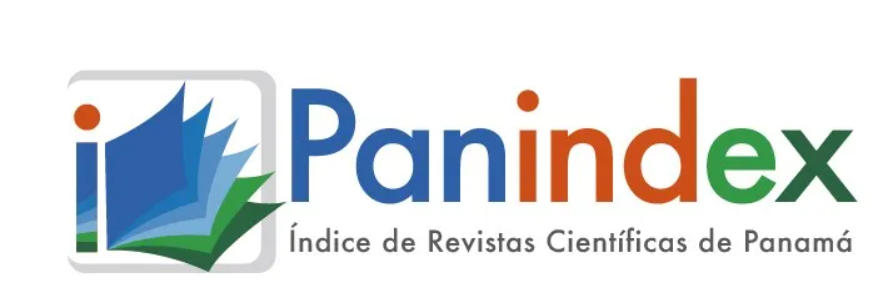The content of the publications and the links suggested in them are the sole responsibility of the authors and not of the METROPOLITAN UNIVERSITY OF EDUCATION, SCIENCE AND TECHNOLOGY (UMECIT) or DIALOGUS magazine. They are protected by international copyright laws as well as the UMECIT and DIALOGUS logos, hence their reproduction is totally prohibited.
This work is licensed under a Creative Commons Attribution-NonCommercial-NoDerivatives 4.0 International License.
The authors maintain the copyright and transfer the right of the first publication to the journal, with the article registered with Creative Commons Attribution-NonCommercial-NoDerivatives License, which allow others They can download the works published in this magazine and share them with other people, as long as their authorship is recognized, but they cannot be changed in any way nor can they be used commercially.
Authors are recommended to include their work in social networks such as Researchgate and institutional repositories once the article or visible fact has been published on the journal page, without forgetting to include the digital document identifier and the name of the journal.



Abstract
Mechanisms for improvement and innovation are generated at every moment with respect to investigative processes. Every day, it is more significant to carefully attend to the factors that influence to improve the execution of investigative alternatives in the field, that is, whether in the educational context or from the social sphere; Added to this, these estimates are permeated by different strategies that seek to improve and innovate the quality of investigative processes and their actions in the context from which they intervene. In relation to this, this review investigates the different modes of innovation that research has provided to consolidate itself as an essential mechanism in different environments that seek to investigate, investigate and explore, through science, to give a clear answer, concrete and effective to questions that do not have a concise and precise answer from the superficial. To face this relationship, research is located as a dynamic, consensual and active process, where innovation emerges as an essential foundation to improve and undertake new theories, which will allow working on important constituent elements within a research management that responds to social, educational, economic, religious problems, among others. With all that has been explored and reviewed, it must be clear that research must not only have its genesis in the academy, but that it is constituted as a fundamental element in each space or area from where there are the tools that make it possible, in addition to providing services that contribute to social development and that contribute to the social debt in research that swarms in spaces that are supposed to be the main axis.
Keywords
References
Aguerrondo, I. (2002). Investigación e Innovación, motores de la nueva formación docente. En Escuelas del futuro en sistemas educativos del futuro (pág. 157). Paper Editores.
Biggs, J. (2001). The reflective institution: Assuring and enhancing the quality of teaching and learning (Vol. 41). Higher Education.
Boshier, R. (2008). In the House of Scholarship of Teaching and Learning, teaching lives upstairs and learning in the basement (Vol. 6). Teaching in Higher Education.
Brew, A. (1995). Teaching and research: Establishing the vital link with learning. Higher Education.
Campbell, G. (1991). Scholarship Reconsidered. Journal of Extension (Vol. 4). Obtenido de http://www.joe.org/joe/1991winter/tt1.html
COLCIENCIAS. (2020). Tipología de proyectos calificados como de carácter científico, tecnológico y de innovación. Bogotá: MinCiencias.
Drucker, P. (2002). La gerencia en la sociedad futura. Bogotá: Norma.
Hughes, M. (2001). First-year Undergraduate Experiences of Group Project Work (Vol. 1). Assessment & Evaluation in Higher Education.
Ismodes, E. (2010). ¿La refundación o la refundición de la universidad? . Lima: Pontificia Universidad Católica del Perú.
Jaimovich, D. (10 de diciembre de 2017). Infobae. Obtenido de https://www.infobae.com/tendencias/innovacion/2017/12/10/argentina-invierte-7-veces-menos-en-investigacion-y-desarrollo-que-los-paises-mas-innovadores/
Jamison, A. (1996). El cambio de las agendas políticas en ciencia y tecnología. Zona Abierta.
Kreimer, P. (2003). Conocimientos científicos y utilidad social. Ciencia, Docencia y Tecnología. Obtenido de http://www.revistacdyt.uner.edu.ar/articulos/descargas/cdt26_kreimer.htm
Latapí, P. (1994). La investigación educativa en México. México: FCE.
Messina, G. (2000). Estado del arte sobre las innovaciones educativas en América Latina. Colombia: Convenio Andrés Bello-UNESCO.
Moreno, G. (1995). Investigación e innovación educativa. Obtenido de http://www.latarea.com.mx/articu/articu7/bayardo7.htm
Naidorf, J. (2009). Los cambios en la cultura académica de la universidad pública. Buenos Aires: Universitaria de Buenos Aires.
Navarro, E. (0715 de 2021). Researchgate. Obtenido de https://www.researchgate.net/profile/Enrique-Navarro-Asencio
Ortega, P. (2010). Formación de una cultura de la innovación. Memorias del Congreso Iberoamericano de Educación. Organización de Estados Iberoamericanos.
Ramírez, M. (2007). Modelo de innovación educativa. Un marco para la Formación y el desarrollo de una cultura de la Innovación. Revista Iberoamericana de Educación a Distancia.
Rogel, R. (2008). Redalyc: una alternativa a las asimetrías en la distribución del conocimiento científico, Ciencia, docencia y tecnología. Obtenido de http://www.redalyc.org/articulo.oa?id=14511370002
Suárez, L. (2010). Formación de una cultura de la innovación. Metas.
Sutz, J. (2013). Investigación e innovación para la inclusión social: la trama de la teoría y de la política. Revista de Filosofía Moral y Política, 48, 25-50. doi:https://doi.org/10.3989/isegoria.2013.04
Vielle, J. (1989). Educación y trabajo: apuntes para un marco conceptual. Revista Interamericana de Educación de Adultos, 97-116.
Wagner, C. (2008). The new invisible college. Science for development. . Washington D.C.: Brookings Institution Press.
Downloads
Publication Facts
Reviewer profiles N/A
Author statements
- Academic society
- Universidad Metropolitana de Educación, Ciencia y Tecnología
- Publisher
- Universidad Metropolitana de Educación, Ciencia y Tecnología




















